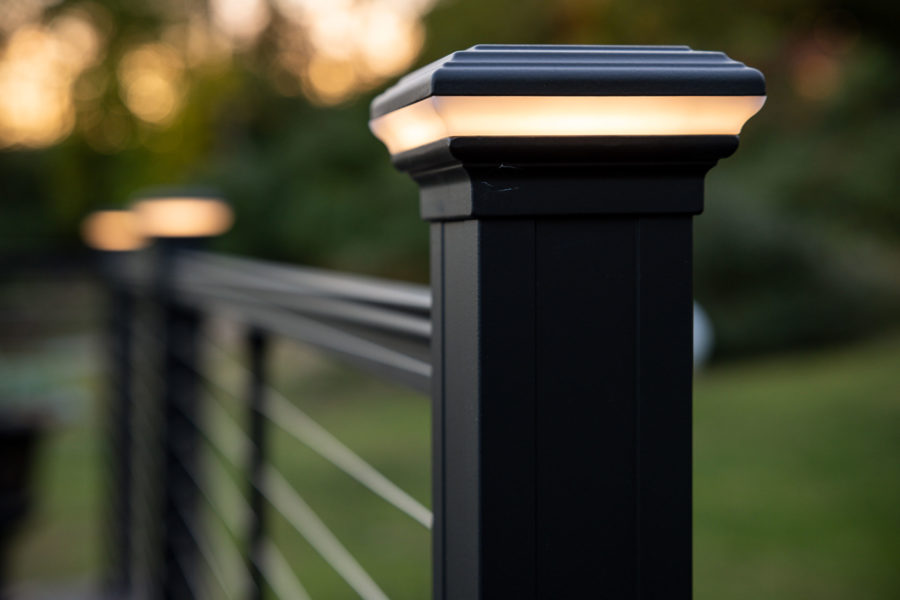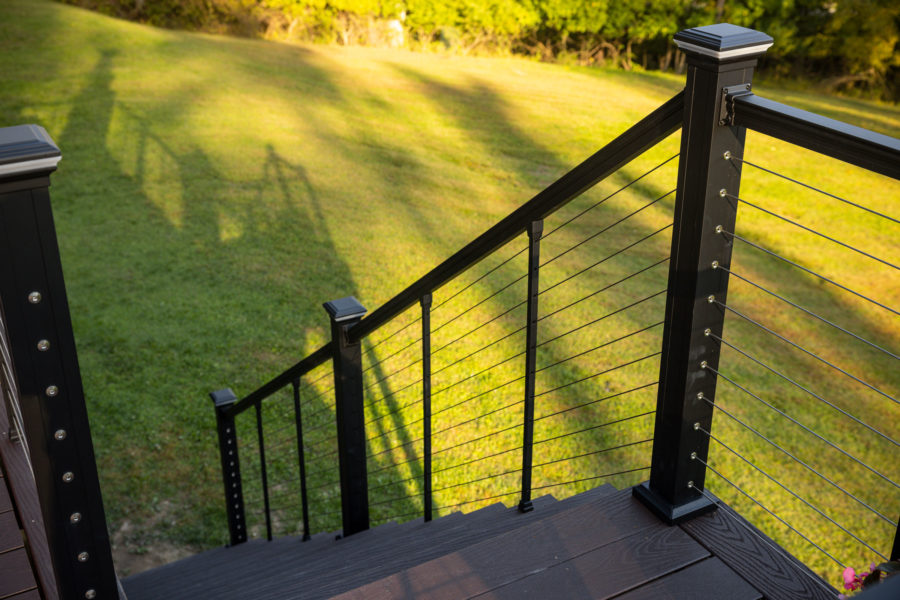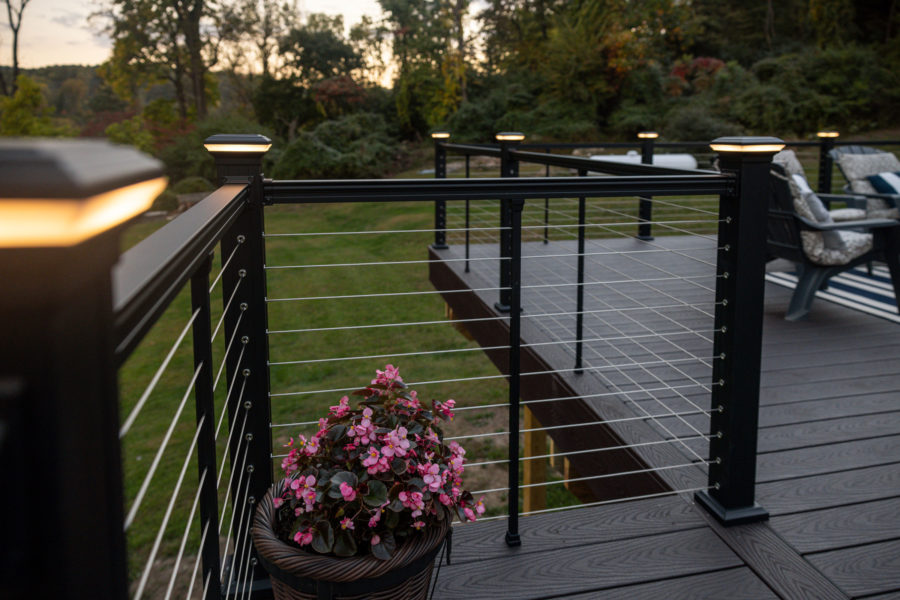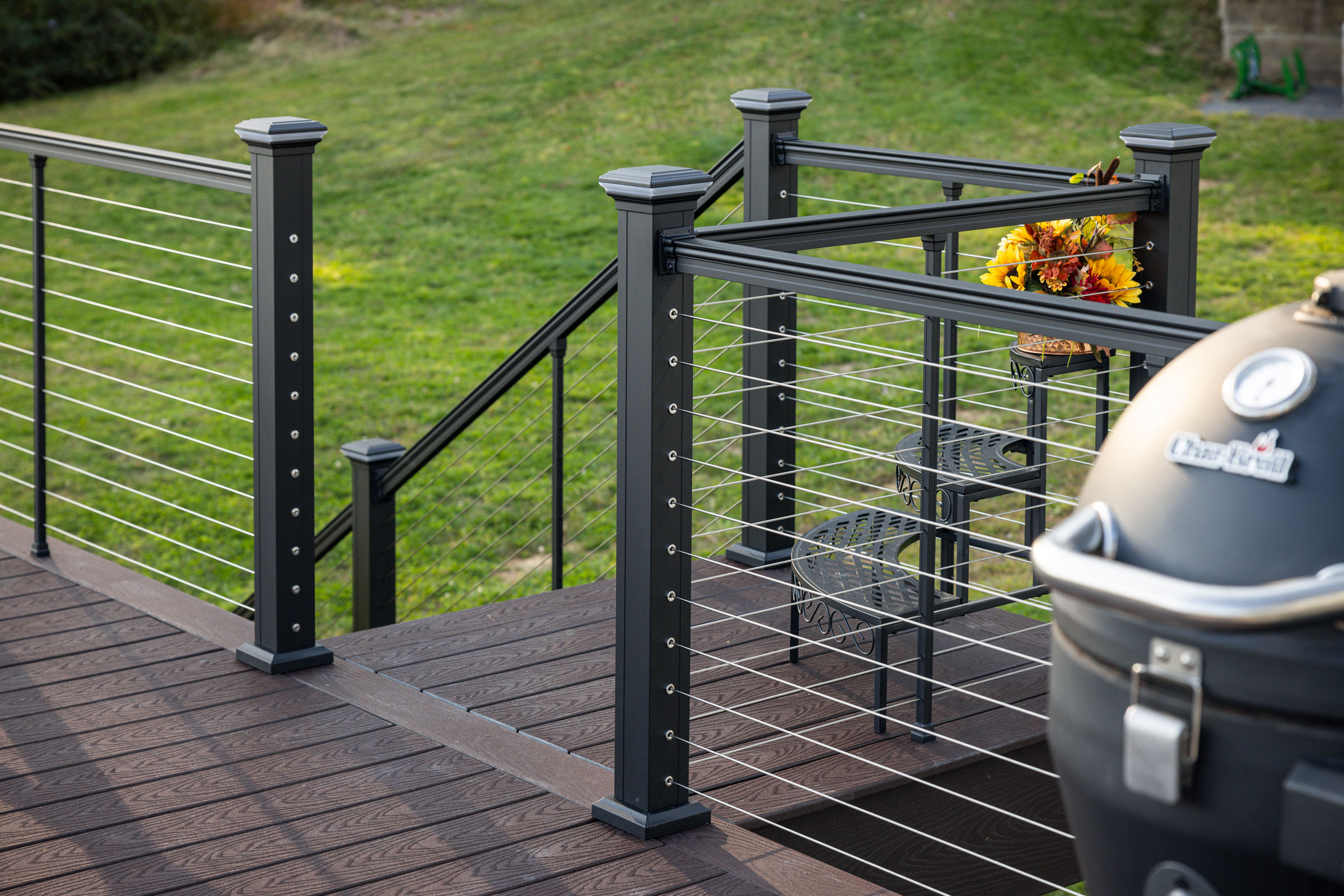Story at a glance:
- Modern aluminum railing with horizontal cable infill is growing in popularity.
- Key-Link’s aluminum railing is code-compliant in most US cities.
- Posts, balusters, and cables are some of the key features to consider for safety.
The popularity of aluminum railing with horizontal cable infill continues to grow as homeowners gravitate toward its modern aesthetic and clean lines. One of the most asked questions about horizontal cable is, “Is it code compliant?” The answer is yes in most US municipalities that fall back on international residential or commercial code.
There are a few specific items to pay attention to when installing horizontal cable to make sure your system is safe or to answer objections. Education is the key when working with horizontal cable.
Posts

Photo courtesy of Key-Link Fencing & Railing
The most important part of the horizontal cable system is the posts. Securely installed posts provide stability for the entire system. A post that’s not installed properly can bend inward when the cable is tensioned and compromise the safety of the railing. Posts should be installed according to the manufacturers’ instructions and cable tensioned to the recommended weight. It’s important to check with local code officials to see if your municipality has recommended tensioning requirements.
Intermediate Balusters

Photo courtesy of Key-Link Fencing & Railing
Different manufacturers have different names for the piece that sits in between the posts, but this support baluster is crucial for safety. Regardless of manufacturer, a vertical support is required by code every 3 feet or less to prevent cables from being spread apart. This helps to ensure no children or pets could force the cables far enough apart to get stuck. The intermediate support baluster, while providing some support for the top rail, is primarily for preventing the cables from being separated.
With Key-Link’s system each 6-foot section includes one intermediate support baluster and each 8-foot section includes two. Each section contains the appropriate number of balusters for a safe, code-compliant railing.
Ladder Effect
This is the objection most people raise when they see a section of horizontal cable: “My children (or grandchildren) could climb that.” In fact, the “ladder effect” first appeared in residential code manuals in 2000 but was removed just six months later. Commercial code never referenced the ladder effect at all. Language about the ladder effect has never been reinserted, and in 2008 the International Code Council issued a statement saying that after a three-year study they could find no indication that horizontal members like cable should require stricter guidelines than other types of railing.
Some code officials might still cite old code manuals or have stricter rules about horizontal cable, but in the US there is no code ruling against horizontal cable. Horizontal cable is indeed code compliant.
Loosening Cables

Photo courtesy of Key-Link Fencing & Railing
Over time cables can lose their tension due to normal wear and tear or with the expansion and contraction of the surrounding materials. With Key-Link’s system this is easily remedied with an Allen wrench. Both ends of the Key-Link system allow for tensioning, so it’s easy to insert the wrench and twist to tension to the proper measurements.


